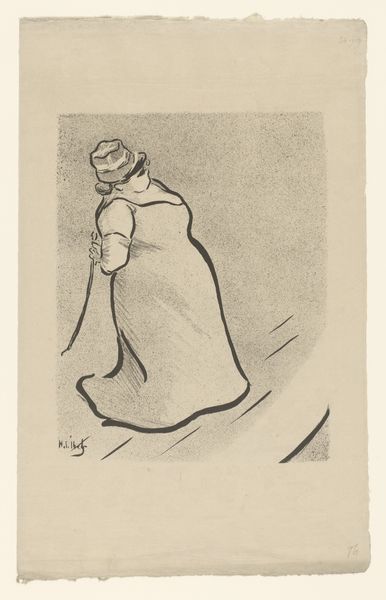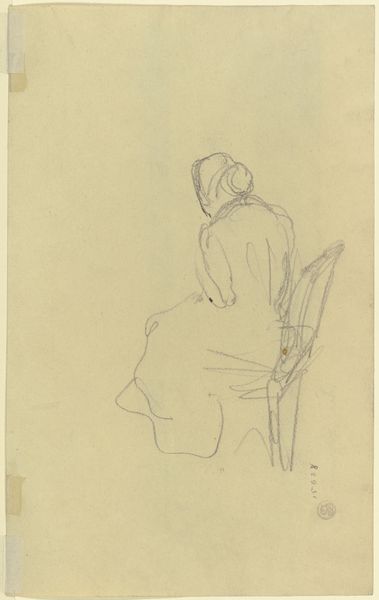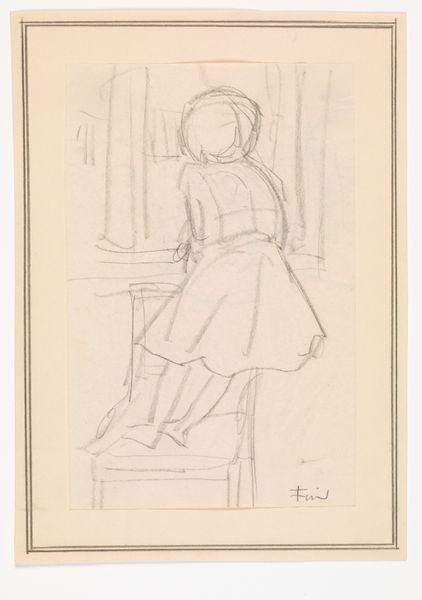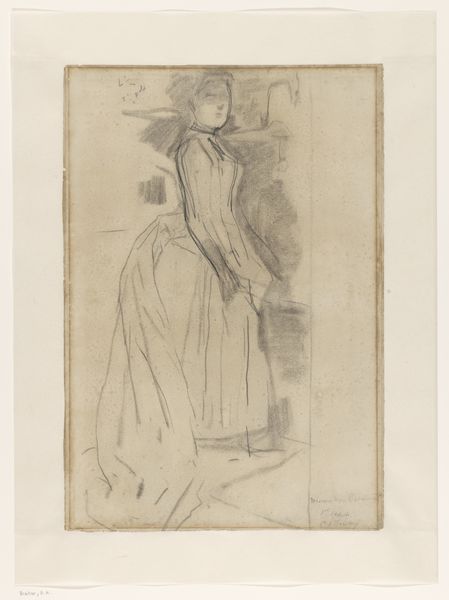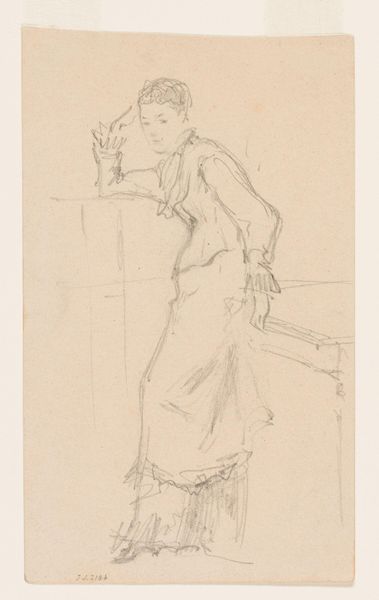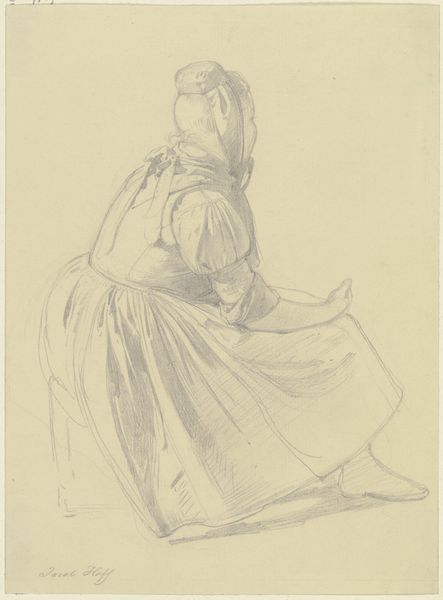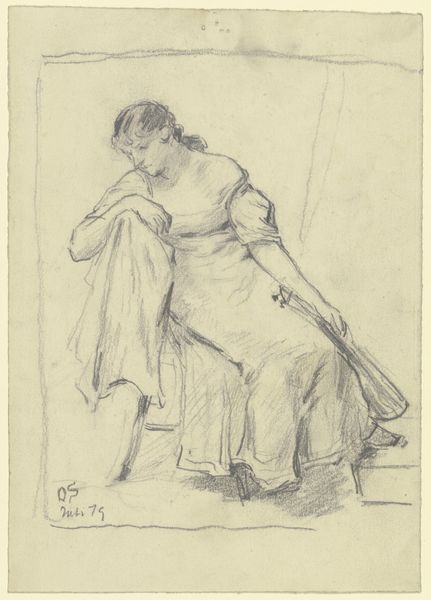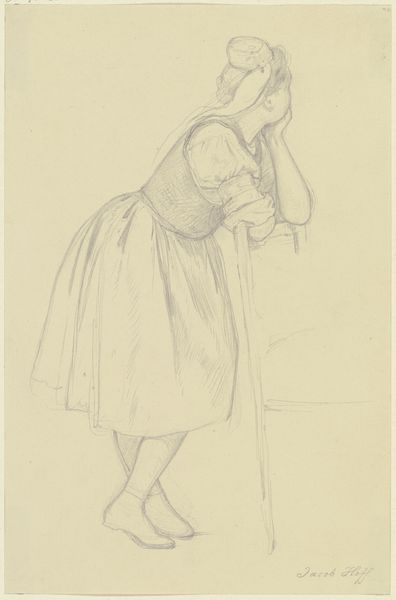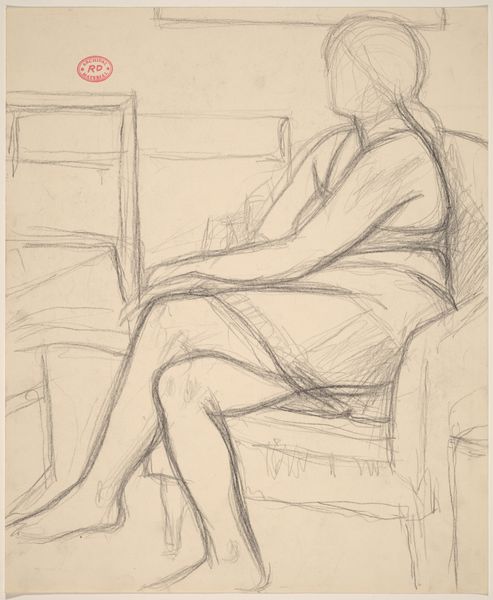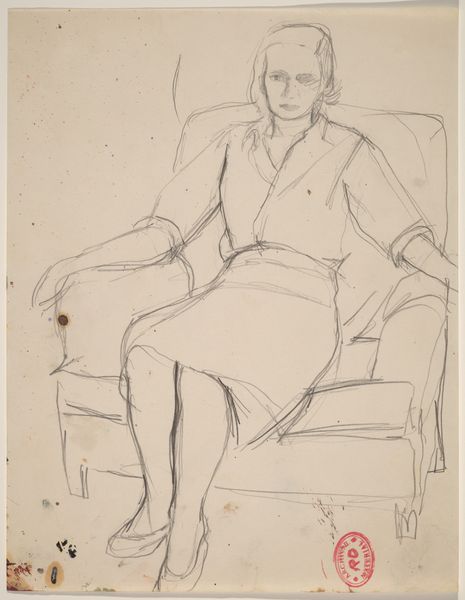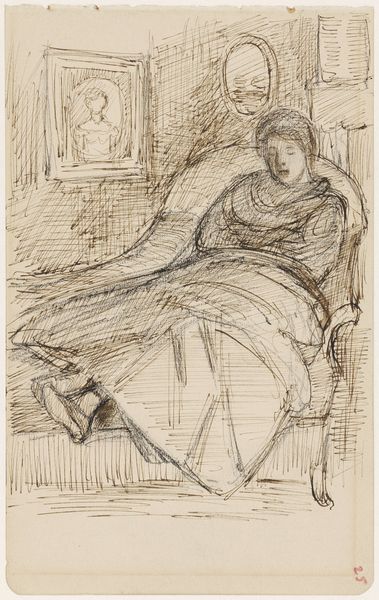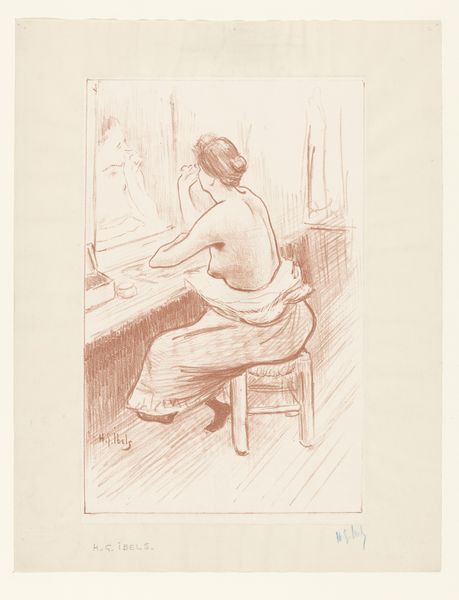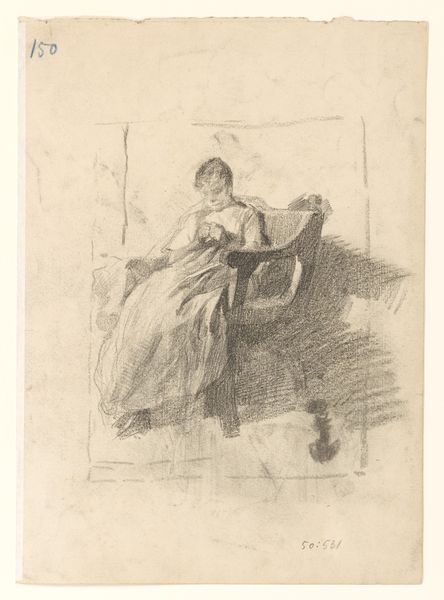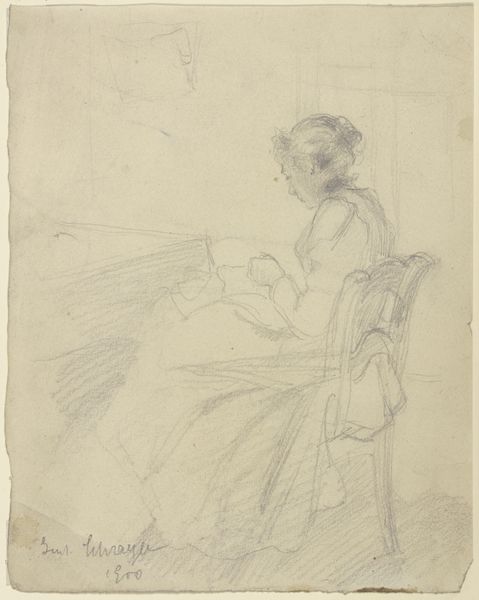
drawing, pencil
#
portrait
#
drawing
#
etching
#
figuration
#
pencil
#
portrait drawing
Dimensions: 222 mm (height) x 180 mm (width) (bladmaal)
Editor: This is Ludvig Find's "Siddende kvinde," dating from sometime between 1869 and 1945. It's a pencil drawing. There's something so raw and immediate about the sketch. It feels incomplete somehow, yet compelling. How do you interpret this work, looking at it from a historical perspective? Curator: The "incomplete" quality you mention is actually quite revealing. Sketches like this offer insight into the artistic process itself. Find gives us access to his working method. Why would an artist choose to share something so seemingly informal with the public? Editor: Maybe he considered the drawing to be a valuable object for display, regardless of its "unfinished" aesthetic. Or it may have been collected and valued after his death. Curator: Precisely. It points to shifting perceptions about art’s purpose. Earlier, only polished, "finished" works were deemed worthy of display, often celebrating established social orders. But the late 19th and early 20th centuries saw a growing fascination with the artist's individual experience. Does this sketch challenge traditional ideas about the artist’s role? Editor: Absolutely. This drawing makes art less about polished presentation and more about immediate impression, offering an insight into the artist's mind. We are seeing something spontaneous and not laboured, creating a sense of intimacy between the artist and viewer. Curator: And it's interesting to consider where this work resides: the SMK, the National Gallery of Denmark. Public museums contribute to the formation of art historical narratives. How does a drawing like this, arguably not 'complete,' fit into Denmark's artistic identity? Editor: That's fascinating to consider. This changes my perception quite a lot. I’m left wondering about the cultural forces that allowed this type of work to be considered culturally valuable. Curator: Indeed. It's about what society chooses to preserve and celebrate. That choice is never neutral.
Comments
No comments
Be the first to comment and join the conversation on the ultimate creative platform.
